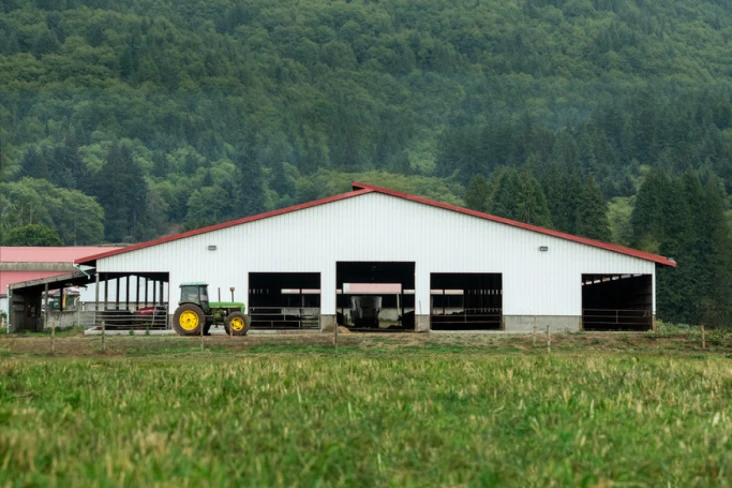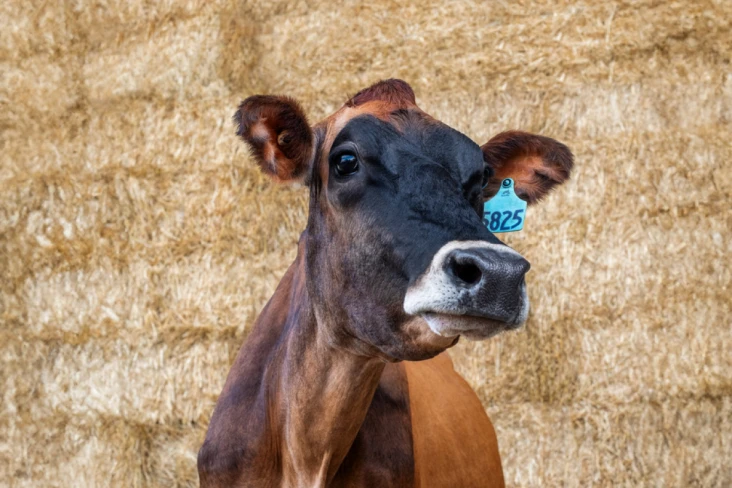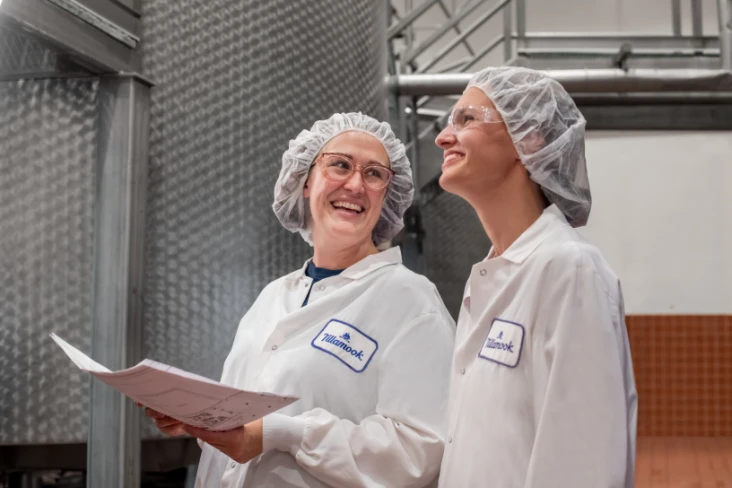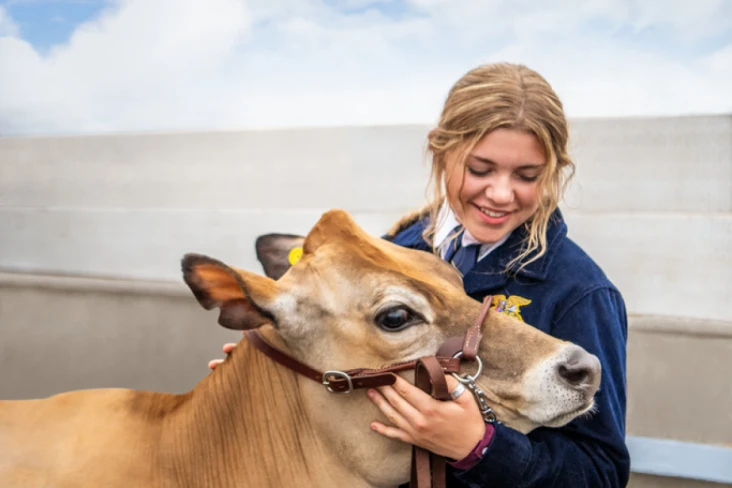At Tillamook County Creamery Association (TCCA), we depend on natural resources to deliver wholesome products and recognize our obligation to protect the resources that sustain us. It is not just our responsibility, it is our heritage. Consuming natural resources must be done conservatively in order to ensure the resources are available for years to come. At TCCA, we envision an existence in which our entire value chain functions in balance with our environment.
“Climate change affects so many things—biodiversity, soil quality, water temperatures, etc.—which will become issues for farmers and affect supply of milk.”
-Lisa Phipps, Former Executive Director, Tillamook Estuaries Partnership
“Everything [the Tillamook plant] has coming in and going out is moved by trucks that burn fossil fuels. The cost, availability, and environmental impact of burning these fuels are significant. If the cost goes up or availability goes down, TCCA will be directly impacted.”
-David McCall, Solid Waste Program Manager, Tillamook County
Stewardship Charter: At TCCA, we uphold our tradition of doing things right by committing to a business model rooted in Stewardship. In 2017, we established a board-approved, third-party reviewed Stewardship Charter that defines our vision and framework. Our Charter is centered on commitments to six key stakeholders, which encompass the issues most important to our business: Thriving Farms, Healthful Cows, Inspired Consumers, Enduring Ecosystems, Fulfilled Employees and Enriched Communities.
We use our Stewardship Charter as the anchor of our Stewardship Management System; that is, we have policies, procedures, documentation, measurement and communication, which cascade from the Stewardship Charter and guide our decision making. Adopting a management system like this is intentional: it ensures we embed our Stewardship commitments across all business functions, not just within our Stewardship Team. It also holds us all accountable to our farmers, consumers, suppliers, employees, customers and neighbors. Upholding our Stewardship Charter is one of our five company shared values and one of our four business objectives.
Energy Policy: We drive change through our Energy Policy. Our objective is to first minimize our energy use and explore opportunities for alternative fuel uses. Our Energy Policy considers electricity, fuel and steam usage at our operating sites including Tillamook Office and Manufacturing Facility, Boardman Office and Manufacturing Facility, Farm Stores, The Tillamook Creamery visitors center, and the Portland Outpost. We also work with our farmer-owners on manure-to-energy biodigesters, and we are working to engage our contract manufacturers and suppliers. This Policy has helped us to source energy strategically and pilot energy efficiency projects (see Energy Sourcing in Oregon and Energy Efficiency Projects, below).
Our Engineering Team works to identify, quantify, and implement energy-saving projects on a continuous basis at our facilities. They meet quarterly to drive progress against our goals and targets.
Key Players: Our Engineering Team manages and monitors energy, water and waste consumption/generation within our facilities. We have identified and dedicated key positions in the company to focus on energy, water and waste to accelerate progress in all these areas.
Our Farm Services Team includes a designated Natural Resources Lead that promotes good agricultural practices and continuous improvement in nutrient and crop management on farms of farmer-owners and contract suppliers. One focus is soil health management, which can increase soil organic matter, feed microbial populations and contribute to carbon sequestration. The team is also responsible for piloting our Voluntary Air Emissions Program.
Finally, our Stewardship Team strives to maximize our net positive impact throughout the entire value chain―beyond just our own facilities and farms of farmer-owners.
Together, these key players work with government agencies, industry organizations (e.g. Food Northwest, Oregon Business & Industry) and non-governmental organizations to focus on impact areas, such as energy, water, fuel consumption and greenhouse gas mitigation and adaptation, participating directly in policy advocacy with the local and state officials. We have continued our partnership with Crosswater Strategies to lobby and advocate for TCCA’s interests in the state legislature.
Key Performance Indicators: We present qualitative and quantitative information alongside our financials to our leadership team, executive team and board of directors. We measure and monitor our total energy consumption (in MMBtus), water consumption (in Gallons) and waste generated (in lbs.) each month. By tracking energy, water and waste over time, we can evaluate trends, assess the success of infrastructure investments and implement actionable change.
Additionally, we conduct an annual environmental footprint to track greenhouse gas (GHG) emissions—the driver of climate change. We began measuring and reporting our Scope 1 and 2 GHG emissions in 2012 to the CDP . Scope 1 is direct GHG emissions and Scope 2 is electricity indirect emissions. Starting in 2014, we added measurement of our Scope 3 emissions, other indirect emissions. The results of our footprint are helpful in that they empower us to make informed decisions to drive change.
To assess air emissions, we test Milk Urea Nitrogen (MUN) from farms of our farmer-owners and contract milk suppliers as a proxy for ammonia (NH3) emissions. Ammonia is emitted from barns, manure storage areas and soils, can contribute indirectly to production of nitrous oxide (N2O), a greenhouse gas. MUN is a tool typically used to assess the protein status of dairy cows; feeding protein in excess of dietary needs to produce milk will result in elevated MUN counts. Conversely, feeding too little protein will compromise milk production and will be associated with low MUN counts. Ultimately, managing protein levels properly prevents feeding excess protein, reduces ammonia emissions and potential greenhouse gas emissions. In 2019, over 90 percent of milk entering our Tillamook and Boardman manufacturing facilities was within the desired range of 8 to 14 mg/dl MUN. Our target is to attain 100 percent.
In 2019, our greenhouse gas emissions—scopes 1, 2, and 3—totaled 1,546,000 metric tons of CO2-eq.
The breakdown was as follows:
Gross direct (Scope 1): 23,000 metric tons CO2-eq
Gross direct (Scope 2): 29,000 metric tons CO2-eq
Gross direct (Scope 3): 1,494,000 metric tons CO2-eq
Historically, our largest source of GHG emissions has been in Scope 3 emissions, purchased goods. In 2019, 90 percent of our Scope 3 emissions were purchased goods and services. And of our purchased goods and services, roughly 90 percent was milk, of which 33 percent can be attributed to farms located in Tillamook County. In total, milk accounts for 78 percent of our total footprint.
The main driver of milk’s impact is the methane produced during enteric fermentation (cow burps), followed by carbon dioxide emissions from feed production. Enteric fermentation is a natural part of cows’ digestive process. As a ruminant animal, cows have four stomach compartments and one of these compartments, the rumen, is responsible for microbial fermentation, which promotes the development of gases like methane. While we are working to address methane emissions, we cannot change the biology and digestive process of a cow. So, we are working to improve what we can and do control. Our carbon mitigation and sequestration efforts are spelled out below. These are initiatives underway at Tillamook County farms only, unless stated otherwise.
We have joined the local Public Utilities District’s Green Team and pay a premium to support this and other projects. We ensure that 100 percent of our electricity use at The Creamery visitor’s center is sourced from renewable energy by paying a premium. Since 2018, our farmers’ manure helped to generate this “green power,” which annually has provided energy for over 1,000 homes. Biodigesters also mitigate water quality issues by converting raw manure into a liquid fertilizer with reduced coliform content.
We are studying the feasibility of using feed supplements to reduce the greenhouse gases associated with enteric rumination. An ionophore is a feed additive that alters rumen microbial populations through ion transfer across cell membranes; meaning, ionophores enable cows to benefit from a greater concentration of the nutrients in their feed that would otherwise not be absorbed. Ionophores thus allow farmers to increase feed efficiency because cows better utilize nutrients.
Ultimately, this reduces greenhouse gas emissions associated with production of cow feed because it takes less feed to support the lifetime of the cow. In addition to enteric fermentation, feed production is a driver of TCCA’s value chain impact. Therefore, reducing feed has the dual effect of reducing emissions related to crop production. Studies have shown that feeding ionophores as a dietary supplement to dairy cows can reduce methane production from enteric fermentation by as much as 30 percent. Most of TCCA’s farmer-owners work with dairy nutritionists to introduce ionophores as a dietary supplement at some point during the lifetime of the cow. TCCA is also actively engaging with scientists and industry thought-leaders to explore alternative feed varietals and supplements that would achieve similar results.
Regenerative agriculture aims to capture carbon in soil and aboveground biomass, reversing current global trends of atmospheric accumulation. Our Farm Services Team has conducted surveys with our farmer-owners in Tillamook County and determined that over 90 percent are applying regenerative management practices, such as nutrient management, cover cropping, no till and riparian buffers. These healthy soils practices result in many ecosystem services such as sequestering carbon, improving water quality, increasing groundwater infiltration and providing habitat for wildlife. Additionally, the Stewardship Team is looking to quantify carbon sequestration at farms.
For our other ingredients beyond milk, we have implemented a Stewardship Supplier Engagement Program. We are working with a provider of sustainability ratings for global sustainable procurements. This has increased visibility into our supply chain including adoption of regenerative agricultural practices.
We have hired a third-party consultant to evaluate air quality best management practices for our farmer-owners. This includes consideration of animal nutrition and feed management, as well as milking parlor practices, housing type, grazing practices and manure and land management—activities that can result in fewer emissions, when correctly managed. Fourteen percent of our farmer-owners were evaluated in 2019. The consultant concluded that dairy farms in Tillamook County are doing their part to reduce their air emissions and improve the local and regional air quality. They are making management modifications to reduce air emissions of concern.
We track Milk Urea Nitrogen (MUN) (in mg/dl) from farmer-owners’ as a proxy for ammonia emissions. MUN is a breakdown product of protein and can be used to monitor the protein status of cows. We strive to have 100 percent of our milk pounds between the desired range, 8-14 mg/dl MUN, and currently report above 90 percent.
While the largest source of our greenhouse gas emissions is from the production of milk, our second largest contributor is the transportation and distribution of our ingredients and products. Upstream transportation requires the use of trucks, rail and ships to transport our ingredients. At TCCA, we have our own transportation fleet, and we also contract through third-party vendors to support milk hauling and general distribution efforts.
We have worked diligently to improve operation efficiency and reduce fuel consumption. We now participate in the Oregon Green Light Program. This program allows our trucks to bypass Oregon automated weigh stations through a preclearance system. By reducing the amount of stops and route diversions, trucks maintain fuel-efficient, consistent driving speeds and reduce idle time associated with weigh stations. In one year, this program saved us 2,865 gallons of fuel. We also saw a 10 percent reduction in fuel consumption by changing out the accelerators in our trucks. We also use speed governors on our trucks for improved fuel efficiency and safety.
The electric power at our TCCA Tillamook manufacturing facility is from Tillamook People’s Utility District (PUD), which sources electricity from Bonneville Power Administration (BPA). As aforementioned, we’ve joined the Green Team and pay extra for 100 percent renewable energy for The Creamery needs and 10 percent for our manufacturing plant needs. BPA’s electrical power is generated by 31 federal hydroelectric projects in the Northwest, one non-federal nuclear plant and several small non-federal power plants.
The electric power at our TCCA Boardman manufacturing facility is from Umatilla Electric Cooperative (UEC). In 2017, 79 percent of UEC’s power was sourced from hydro-facilities. Hydroelectric power has multiple financial and environmental benefits, as compared to traditional sources of electricity. Additionally, hydropower produces fewer emissions and waste products that contribute to air pollution as compared to fossil-fueled plants.
It is important to note that hydropower is not considered renewable in Oregon. Only hydro upgrades are considered renewable. The State of Oregon has a renewable energy portfolio standard requiring an incrementally higher percentage of electricity to be generated from non-hydro renewable resources, which includes hydro upgrades. By 2040, the renewable portfolio requirement will reach 50 percent.
In addition to electric power, our manufacturing facilities rely on steam, propane, natural gas and diesel as energy sources to support operations. In Boardman, we purchase steam from the Portland General Electric (PGE) Coyote Springs electricity co-generation plant. By purchasing waste steam from PGE, we improve energy efficiency and make use of an energy source that would otherwise be a waste product.
In 2019, Tillamook implemented energy reduction projects that save an estimated 1,770,680 kWh annually, going forward. This is equivalent to an annual savings of 1,252 metric tons of CO2e, or 144 homes’ energy use for one year. These projects range from lighting upgrades to motor controls to expanded refrigeration controls.
Our largest energy saving project of the year was an upgrade to one of our refrigeration compressor rooms. By implementing a new control system, TCCA more efficiently meets its refrigeration demands.
Additionally, by installing motor controls on several vacuum pumps in the cheese department, we are able to reduce the running hours of process equipment. In total, these energy savings are realized through reductions in electrical energy consumption and demand.

U.N. Sustainable Development Goals
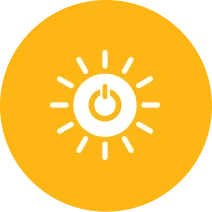
Goal 7
Goal 7: Ensure Access to Affordable, Reliable, Sustainable, and Modern Energy for All
The Pacific Northwest’s commitment to hydro and renewable electricity sources is driving our shift to sustainably sourced power at TCCA.
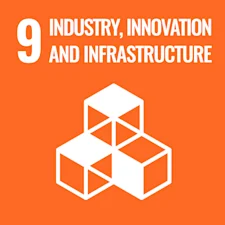
Goal 9
Build Resilient Infrastructure, Promote Sustainable Industrialization and Foster Innovation
Adopting and supporting new technologies, such as a digester, is one way in which we are committed to advancing innovation in the industry.

Goal 13
Take Urgent Action to Combat Climate Change and Its Impacts
We have taken the initial steps to identify and to understand our greatest climate change impacts and are working to implement actionable changes.
